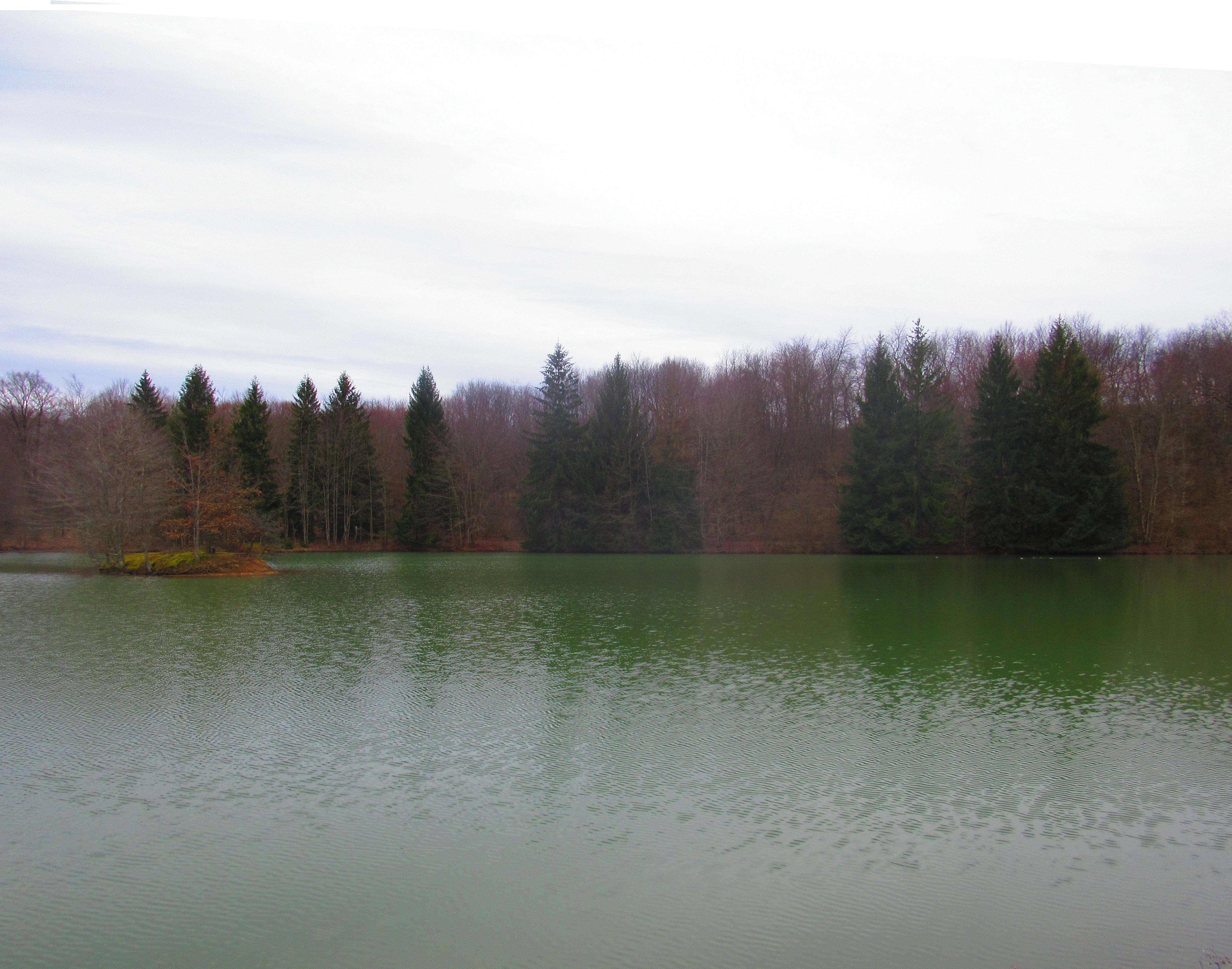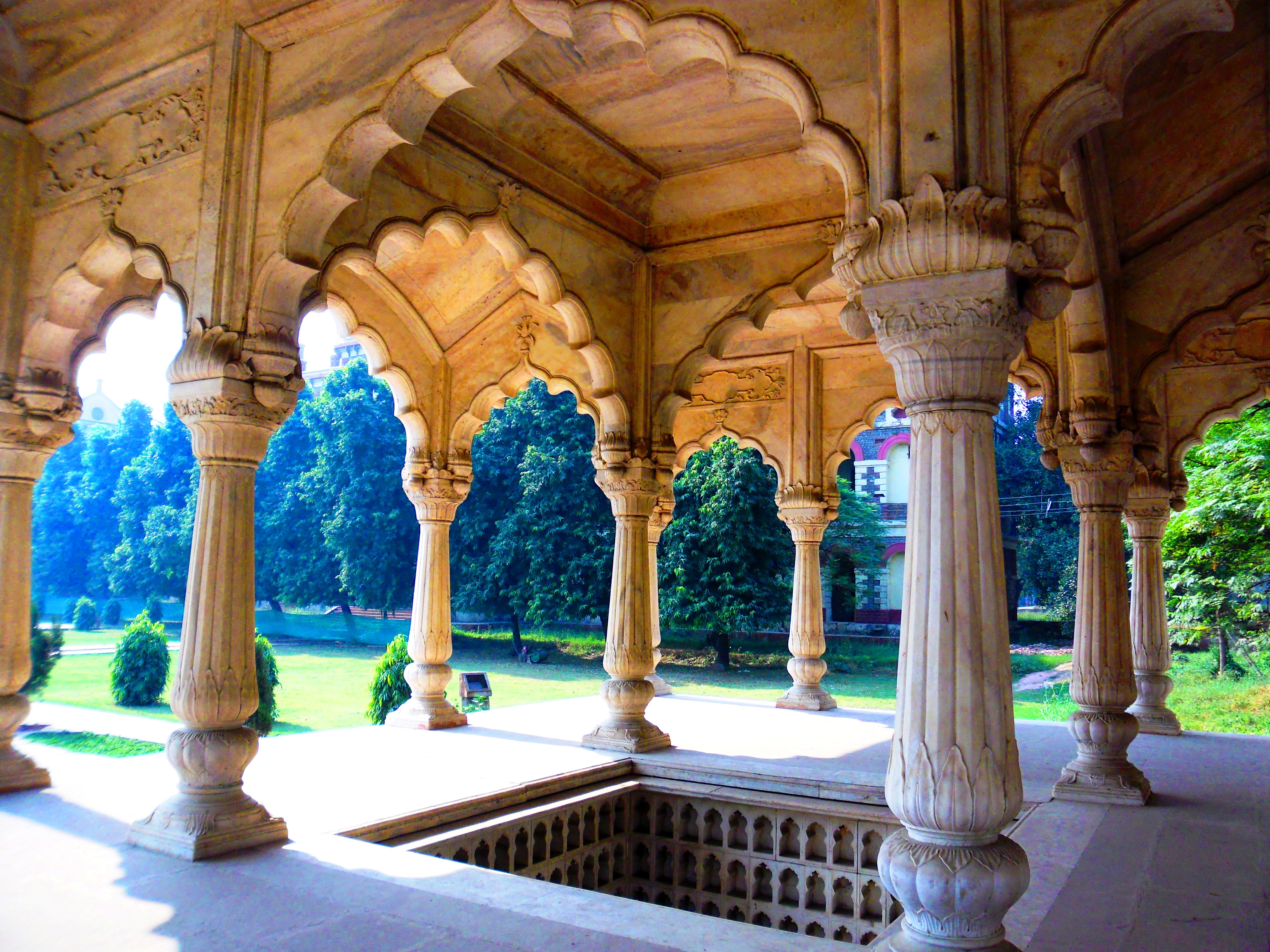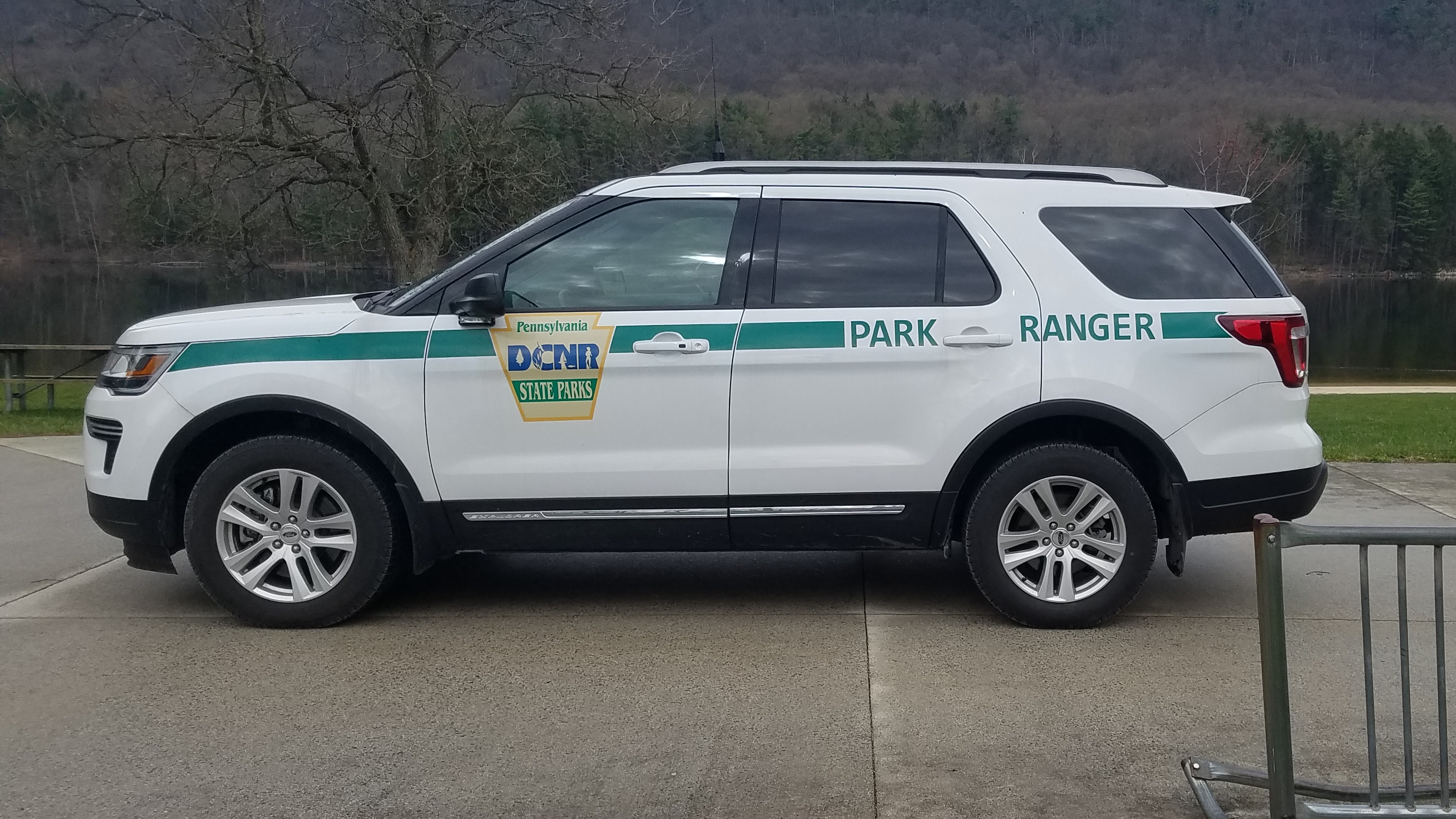|
Yellow Creek State Park
Yellow Creek State Park is a Pennsylvania state park on in Brush Valley and Cherryhill Townships, Indiana County, Pennsylvania in the United States. The park encompasses parts of Yellow Creek and Little Yellow Creek. The old Kittanning Path goes through the parkland. The park was established in 1963. An additional of developed land were purchased in 1982. Yellow Creek Lake, a man-made lake, was built in 1969 by an earth and rock dam on Yellow Creek. Yellow Creek State Park is between the boroughs of Ebensburg and Indiana on U.S. Route 422. Environmental awareness Yellow Creek State Park became the first Pennsylvania state park to switch from gasoline-powered lawn mowers to propane powered lawn mowers in 2008. This is part of a statewide effort to make the state parks more environmentally friendly. The propane mower reduces emissions by 90% and boosts fuel efficiency by 10%. Yellow Creek state park has taken other steps to reduce man's impact on the environment. These i ... [...More Info...] [...Related Items...] OR: [Wikipedia] [Google] [Baidu] |
Indiana County, Pennsylvania
Indiana County is a county in the Commonwealth of Pennsylvania. It is located in the west central part of Pennsylvania. As of the 2020 census, the population was 83,246. Its county seat is Indiana. Indiana County comprises the Indiana, PA Micropolitan Statistical Area, which is also included in the Pittsburgh-New Castle-Weirton, PA-WV-OH Combined Statistical Area. The county is part of the Southwest region of the commonwealth. Prior to the Revolutionary War, some settlers proposed this as part of a larger, separate colony to be known as Vandalia, but opposing interests and the war intervened. Afterward, claims to the territory by both the states of Virginia and Pennsylvania had to be reconciled. After this land was assigned to Pennsylvania by the federal government according to the placement of the Mason–Dixon line, Indiana County was created on March 30, 1803, from parts of Westmoreland and Clearfield counties and was formally organized in 1806. History Indiana County ... [...More Info...] [...Related Items...] OR: [Wikipedia] [Google] [Baidu] |
Fuel Efficiency
Fuel efficiency (or fuel economy) is a form of thermal efficiency, meaning the ratio of effort to result of a process that converts chemical energy, chemical potential energy contained in a carrier (fuel) into kinetic energy or Mechanical work, work. Overall fuel efficiency may vary per device, which in turn may vary per application, and this spectrum of variance is often illustrated as a continuous energy profile. Non-transportation applications, such as Industrial sector, industry, benefit from increased fuel efficiency, especially fossil fuel power plants or industries dealing with combustion, such as ammonia production during the Haber process. In the context of transport, fuel economy is the energy efficiency in transportation, energy efficiency of a particular vehicle, given as a ratio of distance traveled per unit of Motor fuel, fuel consumed. It is dependent on several factors including engine efficiency, transmission (mechanics), transmission design, and tire design. In ... [...More Info...] [...Related Items...] OR: [Wikipedia] [Google] [Baidu] |
Memorial Day
Memorial Day (originally known as Decoration Day) is a federal holiday in the United States for mourning the U.S. military personnel who died while serving in the United States Armed Forces. It is observed on the last Monday of May. It is the unofficial beginning of summer in the United States. Memorial Day is a time for visiting cemeteries and memorials to mourn the military personnel who died in the line of duty. Volunteers will place American flags on the graves of those military personnel in national cemeteries. The first national observance of Memorial Day occurred on May 30, 1868. Then known as ''Decoration Day'' and observed on May 30, the holiday was proclaimed by Commander in Chief John A. Logan of the Grand Army of the Republic to honor the Union soldiers who had died in the American Civil War. This national observance followed many local observances which were inaugurated between the end of the Civil War and Logan's declaration. Many cities and people ha ... [...More Info...] [...Related Items...] OR: [Wikipedia] [Google] [Baidu] |
Horsepower
Horsepower (hp) is a unit of measurement of power, or the rate at which work is done, usually in reference to the output of engines or motors. There are many different standards and types of horsepower. Two common definitions used today are the imperial horsepower as in "hp" or "bhp" which is about , and the metric horsepower as in "cv" or "PS" which is approximately . The electric horsepower "hpE" is exactly , while the boiler horsepower is 9809.5 or 9811 watts, depending on the exact year. The term was adopted in the late 18th century by Scottish engineer James Watt to compare the output of steam engines with the power of draft horses. It was later expanded to include the output power of other power-generating machinery such as piston engines, turbines, and electric motors. The definition of the unit varied among geographical regions. Most countries now use the SI unit watt for measurement of power. With the implementation of the EU Directive 80/181/EEC on 1 January 201 ... [...More Info...] [...Related Items...] OR: [Wikipedia] [Google] [Baidu] |
Yurt
A yurt (from the Turkic languages) or ger (Mongolian language, Mongolian) is a portable, round tent covered and Thermal insulation, insulated with Hide (skin), skins or felt and traditionally used as a dwelling by several distinct Nomad, nomadic groups in the Eurasian Steppe, steppes and Tian Shan, mountains of Inner Asia. The structure consists of a flexible angled assembly or latticework of wood or bamboo for walls, a door frame, ribs (poles, rafters), and a wheel (crown, compression ring) possibly steam-bent as a roof. The roof structure is sometimes self-supporting, but large yurts may have interior posts or columns supporting the crown. The top of the wall of self-supporting yurts is prevented from spreading by means of a tension band which opposes the force of the roof ribs. Yurts take between 30 minutes and three hours to set up or take down, and are generally used by between five and 15 people. Nomadic farming with yurts as housing has been the primary way of life in Cen ... [...More Info...] [...Related Items...] OR: [Wikipedia] [Google] [Baidu] |
Cottage
A cottage, during Feudalism in England, England's feudal period, was the holding by a cottager (known as a cotter or ''bordar'') of a small house with enough garden to feed a family and in return for the cottage, the cottager had to provide some form of service to the manorial lord.Daniel D. McGarry, ''Medieval history and civilization'' (1976) p 242 However, in time cottage just became the general term for a small house. In modern usage, a cottage is usually a modest, often cosy dwelling, typically in a rural or semi-rural location and not necessarily in England. The cottage orné, often quite large and grand residences built by the nobility, dates back to a movement of "rustic" stylised cottages of the late 18th and early 19th century during the Romantic movement. In British English the term now denotes a small, cosy dwelling of traditional build, although it can also be applied to modern construction designed to resemble traditional houses (" mock cottages"). Cottages ... [...More Info...] [...Related Items...] OR: [Wikipedia] [Google] [Baidu] |
Pavilion
In architecture, ''pavilion'' has several meanings; * It may be a subsidiary building that is either positioned separately or as an attachment to a main building. Often it is associated with pleasure. In palaces and traditional mansions of Asia, there may be pavilions that are either freestanding or connected by covered walkways, as in the Forbidden City ( Chinese pavilions), Topkapi Palace in Istanbul, and in Mughal buildings like the Red Fort. * As part of a large palace, pavilions may be symmetrically placed building ''blocks'' that flank (appear to join) a main building block or the outer ends of wings extending from both sides of a central building block, the '' corps de logis''. Such configurations provide an emphatic visual termination to the composition of a large building, akin to bookends. The word is from French (Old French ) and it meant a small palace, from Latin">-4; we might wonder whether there's a point at which it's appropriate to talk of the beginnings o ... [...More Info...] [...Related Items...] OR: [Wikipedia] [Google] [Baidu] |
Picnic Table
A picnic table (or picnic bench) is a Table (furniture), table with benches (often attached), designed for working with and for picnic, outdoor dining. The term is often specifically associated with rectangular tables having an A-frame structure. Such tables may be referred to as "picnic tables" even when used exclusively indoors. Various types of tables have been used for outdoor dining throughout history, but the classic A-frame rectangular picnic table emerged in the United States in the early 20th century. The earliest similar table was described in 1903 and was based on the 18th-century sawbuck table; the most common modern design, known in initially as a "Lassen table", was first used in 1926. While the original and most common material for picnic tables is wooden boards, they may be made anything from split logs to concrete to recycled HDPE plastic. The frame, benches and platform may also be made of different materials. Picnic tables are made in various shapes, from cir ... [...More Info...] [...Related Items...] OR: [Wikipedia] [Google] [Baidu] |
Pennsylvania Department Of Conservation And Natural Resources
The Pennsylvania Department of Conservation and Natural Resources (DCNR), established in 1995, is the agency in the U.S. state of Pennsylvania responsible for maintaining and preserving the state's 124 state parks and 20 state forests; providing information on the state's natural resources; and working with communities to benefit local recreation and natural areas. The agency has its headquarters in the Rachel Carson State Office Building in Harrisburg. History The department was formed on July 1, 1995 when then-governor Tom Ridge split the Department of Environmental Resources (DER) into the DCNR and Department of Environmental Protection (DEP). Budget, staff Organization and leadership Bureaus The DCNR comprises the following subunits: * Deputy Secretary for Parks and Forestry ** Bureau of State Parks ** Bureau of Forestry * Deputy Secretary for Conservation and Technical Services *** Nathan Flood ** Bureau of Geological Survey ** Bureau of Recreation and Conservation * ... [...More Info...] [...Related Items...] OR: [Wikipedia] [Google] [Baidu] |
Habitat (ecology)
In ecology, habitat refers to the array of resources, biotic factors that are present in an area, such as to support the survival and reproduction of a particular species. A species' habitat can be seen as the physical manifestation of its ecological niche. Thus "habitat" is a species-specific term, fundamentally different from concepts such as environment or vegetation assemblages, for which the term "habitat-type" is more appropriate. The physical factors may include (for example): soil, moisture, range of temperature, and light intensity. Biotic factors include the availability of food and the presence or absence of predators. Every species has particular habitat requirements, habitat generalist species are able to thrive in a wide array of environmental conditions while habitat specialist species require a very limited set of factors to survive. The habitat of a species is not necessarily found in a geographical area, it can be the interior of a stem, a rotten log, ... [...More Info...] [...Related Items...] OR: [Wikipedia] [Google] [Baidu] |
Hiking
A hike is a long, vigorous walk, usually on trails or footpaths in the countryside. Walking for pleasure developed in Europe during the eighteenth century. Long hikes as part of a religious pilgrimage have existed for a much longer time. "Hiking" is the preferred term in Canada and the United States; the term "walking" is used in these regions for shorter, particularly urban walks. In the United Kingdom and Ireland, the word "walking" describes all forms of walking, whether it is a walk in the park or backpacking in the Alps. The word hiking is also often used in the UK, along with rambling, hillwalking, and fell walking (a term mostly used for hillwalking in northern England). The term bushwalking is endemic to Australia, having been adopted by the Sydney Bush Walkers Club in 1927. In New Zealand a long, vigorous walk or hike is called tramping. It is a popular activity with numerous hiking organizations worldwide, and studies suggest that all forms of walking have health b ... [...More Info...] [...Related Items...] OR: [Wikipedia] [Google] [Baidu] |








